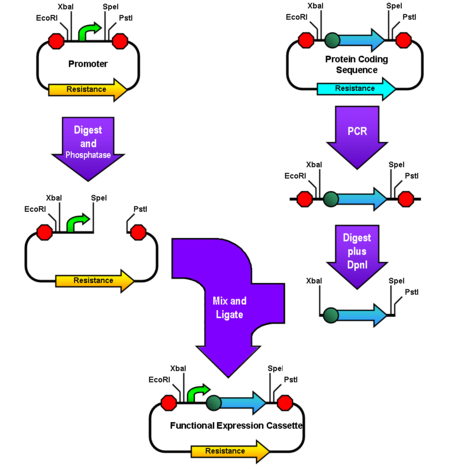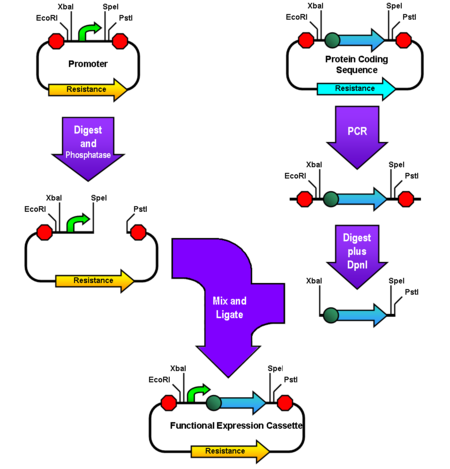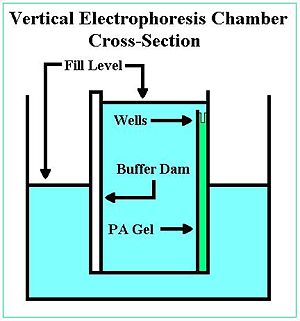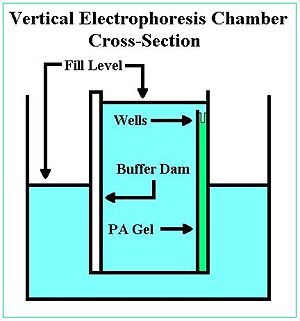Curators
Kersten S. Rabe
Anyone should feel free to add themselves as a curator for this consensus protocol. You do not need to be a curator in order to contribute. The OpenWetWare community is currently discussing the idea of protocol curators. Please contribute.
Abstract
A very fast and easy method for the size-selective removal of smaller DNA from larger fragments. By adjusting the PEG concentration the range of precipitated DNA fragments can be adjusted.
Materials
Reagents
- DNA to be separated (e.g. PCR reaction mixture)
- 30% (w/v) PEG 8000/30 mM MgCl2 (concentration of PEG 8000 can be varied to shift the size of the percipitated DNA. The concentration used here will remove DNA fragments with less than 300bp)
- TE Buffer, pH 8.0 (10 mM TRIS-HCl, 1 mM EDTA, pH 8.0)
Equipment
- Centrifuge which can do up to 10.000 rcf (=g)
- Appropriate tubes for the centrifuge
- Pipettes
- Vortexer
Procedure
- Mix 50 μL of sample with 150 µL of TE
- Add 100 µL of PEG/MgCl2
- Vortex
- Centrifuge 15 min at 10.000 rcf at roomtemperature
- Carefully remove supernatant not to disturb the pellet, which will be invisible
- Dissolve the pellet in a appropriate amount of buffer of choice
Critical steps
- Before centrifugation mark the tubes in order to know where the pellet will be expected afterwards, as the pellet will be (nearly) invisible
Other PEG Concentrations and Approximate Size Exclusion
% PEG — Fragments Excluded
- 10% — <300bp
- 6% — <500bp
- 5% — <700bp
- 4% — <1kb
Notes:
-
- Yield decreases considerably when <10% PEG is used
- Always use 10mM final concentration of MgCl2
Troubleshooting
Notes
- This protocol is being mentioned in the manual for the Gateway recombinational cloning system based on published methods.[1, 2, 3]
- Adjusting the PEG concentration can shift the threshold of the size of the precipitated DNA. The higher the final PEG concentration, the smaller the fragments that will be removed (which will stay in the supernantant).
- If the sample volume is different, simply adjust the other volumes accordingly to end up with the same ratio.
References
- http://www.invitrogen.co.jp/focus/181027.pdf
- Paithankar KR and Prasad KS. Precipitation of DNA by polyethylene glycol and ethanol. Nucleic Acids Res. 1991 Mar 25;19(6):1346. DOI:10.1093/nar/19.6.1346 | PubMed ID:2030954 | HubMed [Paithankar]
- Lis JT. Fractionation of DNA fragments by polyethylene glycol induced precipitation. Methods Enzymol. 1980;65(1):347-53. DOI:10.1016/s0076-6879(80)65044-7 | PubMed ID:6246357 | HubMed [Lis]
All Medline abstracts: PubMed | HubMed
Discussion
You can discuss this protocol.
Tag this page with categories to allow easier indexing and searching. See Categories for information on existing categories.






